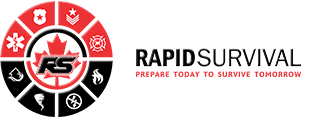Uncategorized
Emergency Preparedness Kit Checklist: Don’t Wait Till it’s Too Late
Emergency Preparedness Kit Checklist: Don’t Wait Till it’s Too Late
Some of the things I never thought of is an emergency preparedness kit, before tragedy hit and I desperately needed one. Don’t wait until you find yourself in such a situation. This weekend, spare a few hours to prepare your emergency preparedness kit.
Emergency preparedness kit can help you deal with a natural disaster and calamity in a better way. It’s your responsibility that you take care of yourself and your loved ones during these harsh conditions. That’s why you must have an emergency kit prepared with you so that you can cope with the changes professionally and efficiently.
Don’t wait! Get started today
You can also get a greater sense of satisfaction in putting together this emergency kit than getting your dishes washed! So, why not get started today? Don’t wait until it’s too late.
Here are some of the things that you must keep in an emergency preparedness kit
Cash
Set aside emergency cash in small bills (such as two, fives, and tens). You may also have an account with an automated teller machine (ATM) that will allow you to get money in an emergency.
Important Documents
Gather essential identifying details in a waterproof container at one central location. Copies of Social Security cards, marriage records, driver’s licenses, and other such documents are included in the essential documents.
Ensure that all of your financial information is in one location and easy to get. These documents include your house, health, and auto insurance plans, and account savings and checking records.
Water and Food
Water will be your heaviest item because, for at least three days (both drinking and sanitation), you need 1 gallon or around 4 liters of water per person every day. Along with that, you must keep a minimum of three days ‘supply of non-perishable food.
Include a three-day supply of ready-to-eat foods, such as canned meat, canned fruit and vegetables, and ultra-high temperature milk. Moreover, carry peanut butter, granola, nuts, dry cereal, and crackers in your emergency kit.
Power Batteries and ReChargers
Keep spare batteries and rechargers (your emergency kit should have a solar charger, but you can get a second one at home as well). Flashlights and extra batteries will save you from getting into real trouble.
First Aid Kit
Create a first aid kit on your own or get an assembled kit from the market. The first aid kid must include the following items:
- Band-aids of various sizes
- Antibiotic spray/cream
- Antiseptic wipes
- Surgical masks
- Gloves
- Adhesive tape
- Scissors
- Tweezers
- Insect repellent
- Sunscreen
- Rubbing alcohol
- Pain killers
- Medicine necessary or which the family members usually take
Keep all the prescription medication in packaging and keep updating the kit as medicines and other items may expire with time.
Basic/General items
Keep the following supplies in your emergency preparedness kit:
- Waterproof matches
- Toilet paper and sanitizer/handwash
- Aluminum foil
- Cellphone with extra battery/power bank and charger
- Local area maps
- Can-opener, knife, hammer and screwdriver, etc
- Watch and whistles
- Hats
- Plastic utensils/dishes
- Towels
- Travel sewing kit
- Car kit
- Paper and pencil
- Fire extinguishers
Clothing
Be prepared with the clothes, whether sheltered or evacuated, one complete change of warm clothing and shoes per person, including:
- A jacket or coat
- Hat and gloves
- Sleeping bag and blanket
- Comfortable shoes
- Warm and long-sleeved shirts
- Raincoat
Vehicle Safety
Keep the maintenance of your vehicle up-to-date with time. The car seats must be adequately installed. Always carry roadside emergency supplies. Keep a first-aid kit in your car at all times. Before evacuating, check that you have sufficient fuel in your vehicle.
The tires of the vehicle must be in a proper and safe condition. Keep a spare tire in your car and other necessary tools that may secure you from trouble in an emergency.
Needs of the Family Members
Consider the needs of the family members and prepare the emergency kit according to the requirements. Medical supplies needed by the family members must be included in the bag.
If you have a kid, then consider carrying the kid’s favorite toys or items that he uses the most. Baby supplies (bottles, milk, diapers, baby food, and clothes) are necessary items to be prepared. Pet supplies for the pet, including leash, ID, pet food, carrier, and bowl, etc. must be carried along.
Two-way radios for communication purposes is another item to be carried. Moreover, an extra set of car and house keys are essential to be taken to avoid any unnecessary incident to occur in an already tensed emergency.
Conclusion
It’s a good idea to build an emergency preparedness kit checklist of your own to make sure that you have everything you need. Use the above list as a reference. Either print it out this post or copy it and paste the information found in it into a Word or Excel sheet and add your things.
Most probably, you may never use your emergency preparedness kit, but you will remain unruffled if already prepared. Therefore, I recommend you not to wait till it’s too late!

